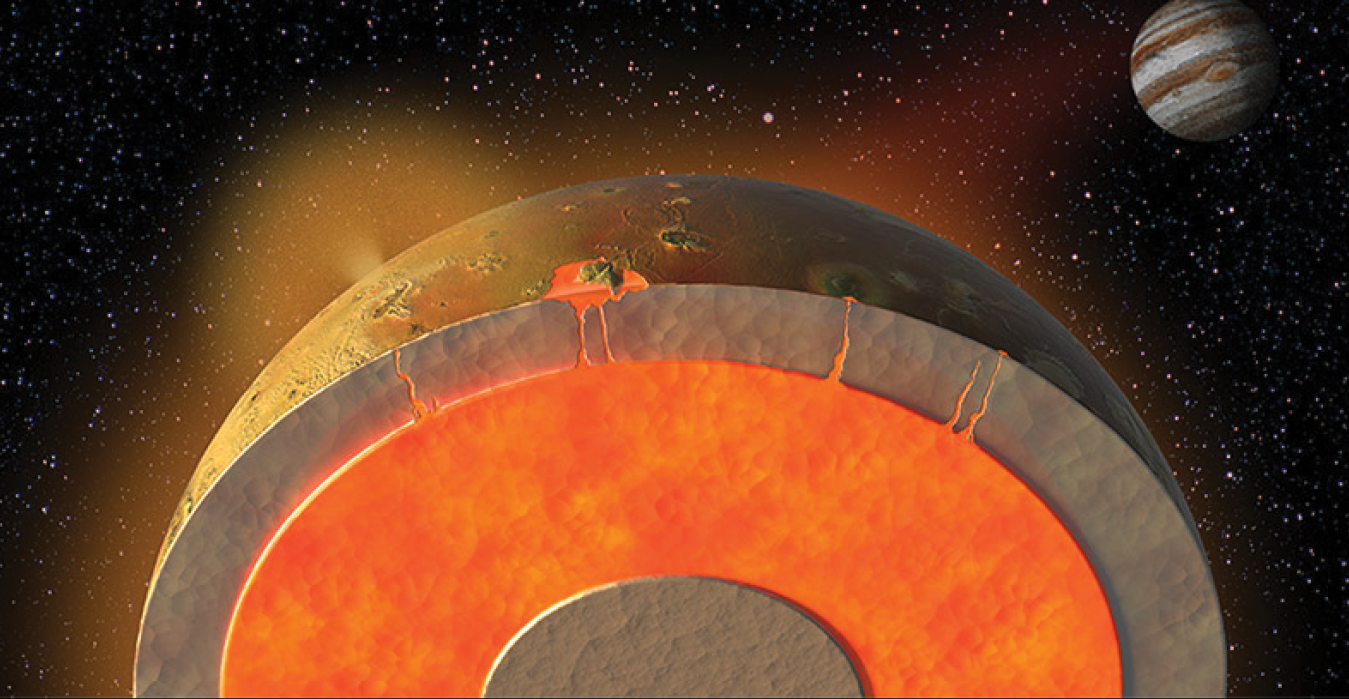Io was always extremely volcanic, evidence indicates
DOI: 10.1063/pt.uepw.cgbg
The most volcanically active object ever observed in the solar system is Io. Its massive and sustained eruptions, extensive lava flows, and huge lava lakes are more substantial than any on Earth and have led researchers to wonder: Has Io always been that way? The question is hard to answer because its surface is constantly changing. In just a million years—which is short by geological standards—Io’s entire surface has been repaved by volcanic deposits, destroying craters and other evidence of geologic history over its 4.5-billion-year existence.

Jupiter’s moon Io may have experienced large eruptions and lava flows throughout its 4.5-billion-year history. (Image by Chuck Carter and James Tuttle Keane/Keck Institute for Space Studies.)

Now Katherine de Kleer of Caltech and colleagues have developed a way to study Io’s volcanic history by tracking its sulfur. With new isotope evidence and geochemical modeling, they found that Io’s volcanism was likely even more pronounced in the past and may have been present over the moon’s entire history.
The researchers observed sulfur gases in Io’s atmosphere with the Atacama Large Millimeter/Submillimeter Array in Chile. When a gas molecule loses angular momentum, it transitions from a higher rotational energy state to a lower one and, in the process, emits microwave radiation. Each molecule has many unique spectral emission lines that can be observed. Even molecules made with different isotopes—say, with sulfur-32 and sulfur-34—are distinguishable. With the molecular emission data, the researchers determined the sulfur isotope composition of Io’s atmosphere and found that it contains much more 34S than 32S.
In fact, no other measured body in the solar system has such a high ratio of 34S/32S. To interpret Io’s unusual sulfur enrichment, one of the paper’s coauthors, Ery Hughes, led the development of a geochemical model of Io’s interior and its atmosphere. The sulfur ratio likely reflects a geochemical process that begins when sulfur dissolved in magma rises through Io’s mantle and erupts from volcanoes. The lighter 32S diffuses into the upper atmosphere more readily than 34S, and then the atmospheric sulfur collides with stray plasma from Jupiter’s magnetosphere before being lost to space.
The high 34S/32S ratio may indicate an especially volcanic past. The geochemical modeling shows that Io could have been losing sulfur in the past at a rate as high as five times what it is today. The extreme volcanism necessary to cause that much sulfur loss comes from tidal heating. Jupiter’s intense gravity flexes Io, and the resulting tidal energy dissipates in Io’s interior as frictional heat. Io’s tidal heating is possible only because of its elliptical orbit around Jupiter, caused by interactions with other Jovian moons. So by learning more about Io’s volcanic history, researchers may unravel more about the formation of Jupiter and its moons—and potentially other systems subject to strong tidal forces. (K. de Kleer et al., Science, 2024, doi:10.1126/science.adj0625
More about the Authors
Alex Lopatka. alopatka@aip.org





